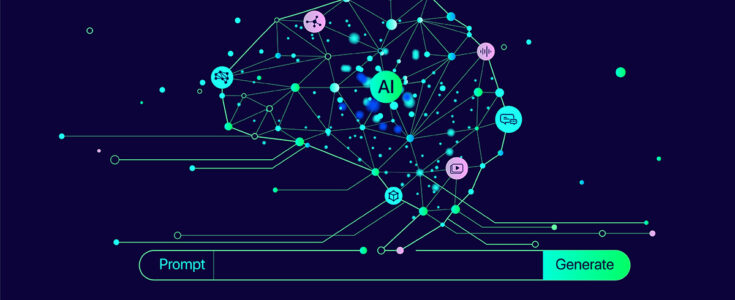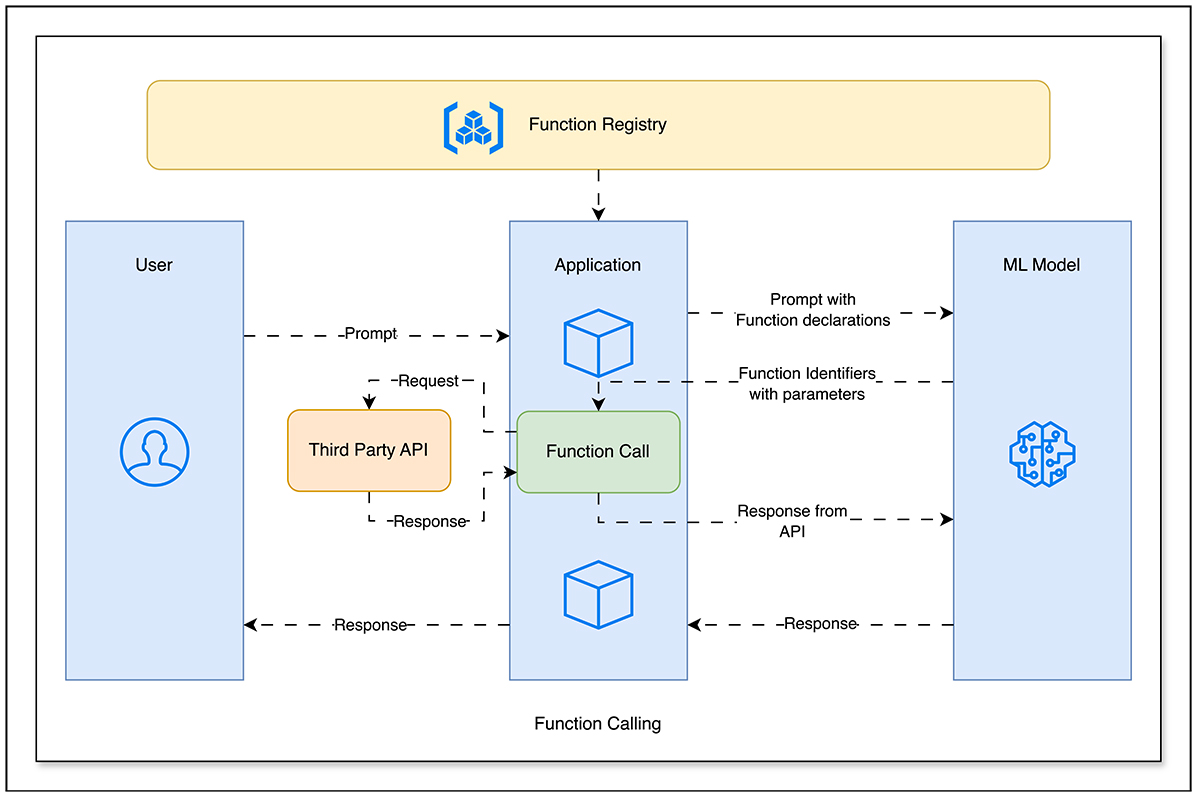
Enhancing GenAI Applications with Azure OpenAI Function Calling

Overview
Generative AI (GenAI) has revolutionized machine interaction, providing human-like responses and automating complex tasks. With Azure OpenAI, these capabilities are significantly enhanced through function calling. Function calling in Azure OpenAI allows AI models to trigger predefined functions, enabling more dynamic, accurate, and context-aware interactions. This blog explores what function calling is, its implementation within Azure OpenAI, its impact on modern application development, use cases, technical implementation, and architectural overview.
What is Function Calling?
Function calling in Azure OpenAI involves AI models invoking specific functions during their operations. These functions, custom-defined, handle particular tasks such as data retrieval, API interactions, or executing complex algorithms. This capability bridges the gap between AI-generated insights and actionable outcomes within the Azure ecosystem.
Also Read: Two Use Cases of Digital Twins in Healthcare
Implementation of Function Calling in Azure OpenAI
Implementing function calling in Azure OpenAI involves several steps:
- Defining Functions: Developers create functions to perform specific tasks in languages such as C# and Python.
- Integrating with Azure OpenAI: Functions are integrated with Azure OpenAI through APIs, allowing the AI to call these functions when certain conditions are met or specific inputs are provided.
- Triggering Functions: The AI model is programmed to recognize when to trigger a function based on user input or contextual understanding. This involves setting up rules and conditions within the model’s architecture.
- Processing and Returning Results: Once a function is called, it processes the request, performs the required task, and returns the result to the AI model, which then incorporates this result into its response.
Impact on Modern Application Development
Function calling enhances modern application development by:
- Improving Contextual Understanding: AI models can fetch real-time data or perform operations that enhance their understanding and responses.
- Enhancing Interactivity: Applications become more interactive and dynamic as AI models can perform tasks like database queries, API calls, or computational tasks in real-time.
- Boosting Efficiency: Function calling automates repetitive or complex tasks, reducing manual effort and speeding up processes.
- Increasing Flexibility: Developers can update or add new functions without modifying the core AI model, making the system more adaptable to changing requirements.
Also Read: Microservices Orchestration Using Azure Kubernetes Service (AKS)
Use Cases
- Customer Support: AI-powered chatbots can call functions to fetch user data, update records, or process transactions, providing personalized and efficient customer service.
- E-commerce: GenAI models can invoke functions to check inventory, place orders, or provide product recommendations based on real-time data.
- Healthcare: AI applications can call functions to access patient records, schedule appointments, or analyze medical data, improving patient care and operational efficiency.
- Finance: GenAI models can execute financial transactions, retrieve market data, or perform risk analysis through function calls, enhancing decision-making and service delivery.
Architectural Overview

A robust architecture is essential for implementing function calling in Azure OpenAI applications. Here’s an in-depth look at the architectural components and their interactions:
- ML Model: The core generative AI model (like Azure OpenAI – GPT-4) that processes user inputs and generates responses.
- Function Registry: A registry of available functions that the AI model can call, logically grouping function metadata such as name, parameters, and tasks performed.
- Application Layer: An interface facilitating communication between the AI model and the functions, handling the routing of requests and responses between the AI model and backend services.
- Third Party API: The actual implementation of the functions, which may involve database operations, API calls, or other services.
- Response Handling: A mechanism to integrate function outputs into the AI model’s responses.
Also Read: Enhancing GenAI Applications with Azure OpenAI Function Calling
Additional Considerations
- Security: Ensure that function calls are secure and do not expose sensitive data or vulnerabilities.
- Scalability: Design the system to handle high volumes of function calls efficiently.
- Monitoring and Logging: Implement monitoring and logging to track function calls, detect issues, and optimize performance.
Conclusion
Function calling significantly enhances the capabilities of GenAI applications, making them more interactive, efficient, and context-aware. By enabling Azure OpenAI models to perform specific tasks through predefined functions within the Azure ecosystem, developers can create more dynamic and responsive applications. This approach not only improves user experience but also opens up new possibilities for automation and intelligent decision-making in various industries.
For more detailed technical guidance, you can refer to the function calling with Azure OpenAI Service.
By leveraging these resources, developers can implement and optimize function calling in their GenAI applications, driving innovation and efficiency in their respective fields.
Also read: Driving Innovation: How Cloud and Generative AI Empower Each Other
Also read: Enhancing GenAI Applications with Azure OpenAI Function Calling
Also read: Microsoft and Apexon: Co-pilots for Enterprise Success
Also read: AWS re:Invent 2024: Where AI Stole the Show




